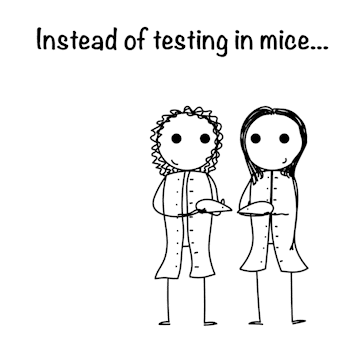Mice are (no longer) a model for human Chronic Kidney Disease
If you’re reading this, you’re not a mouse. In some cases, we might play pretend, though. Cases such as when we use mice as animal models for human diseases because there is no better (ethically acceptable) alternative.

STOP PRETENDING TO BE A MOUSE
If it’s up to Lene and Rikke, there might be one case less where we must pretend to be mice: Chronic kidney disease (aka CKD).
CKD affects about 10-15% of us. The number of incidences increases with common lifestyle diseases such as diabetes, high blood pressure and obesity. So CKD is on the rise. Luckily, researchers are trying to develop new drugs, but they often work differently on mouse kidneys than on human kidneys.
Although mice are commonly used as animal models, their renal physiology is just not as complex as the human. That’s one of the reasons why CKD drugs developed using animal models often don’t work in humans.
That’s why Rikke and Lene want us to stop pretending to be mice.
START USING A HUMAN MODEL
But how are we going to develop new and better treatments then, you might ask? Lene and Rikke have a suggestion: We should use a human model.
Not a whole human being, of course but a model based on human kidneys, which can mimic the complexity of our kidneys more accurately. Because what’s more accurate than human kidneys? Nothing!
Currently, Rikke and Lene (and their teams) are developing this new CKD model. They get fresh tissue of human kidneys directly from the operating room, and they have three clear aims for their new model:
- FIND NEW TARGETS: The new model can be used by researchers to find new targets for treating CKD.
- PREDICT PROGRESSION: If the researchers succeed in finding good biomarkers for CKD using this model, it can be possible to predict how the disease will develop.
- EVALUTE DRUGS: If drugs for humans are tested in human models, they are more likely to work well when administered to human patients.
